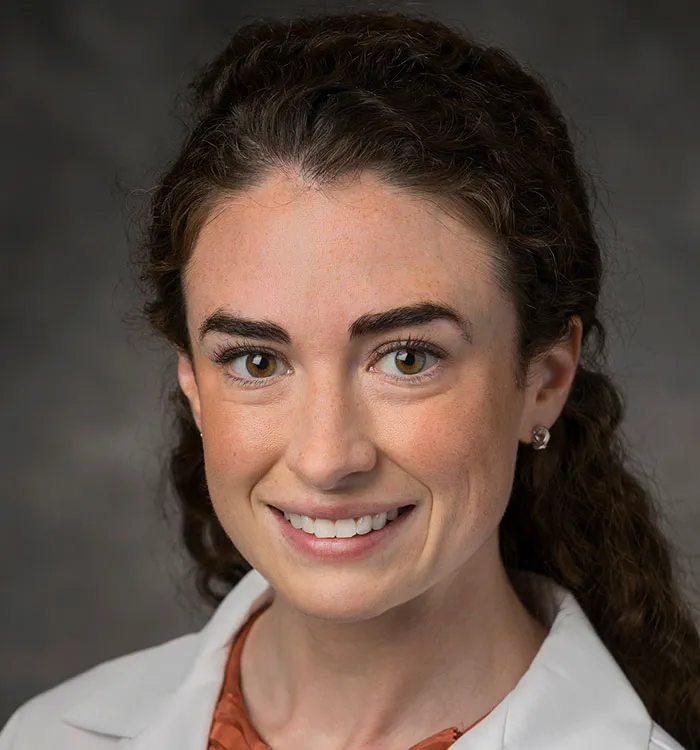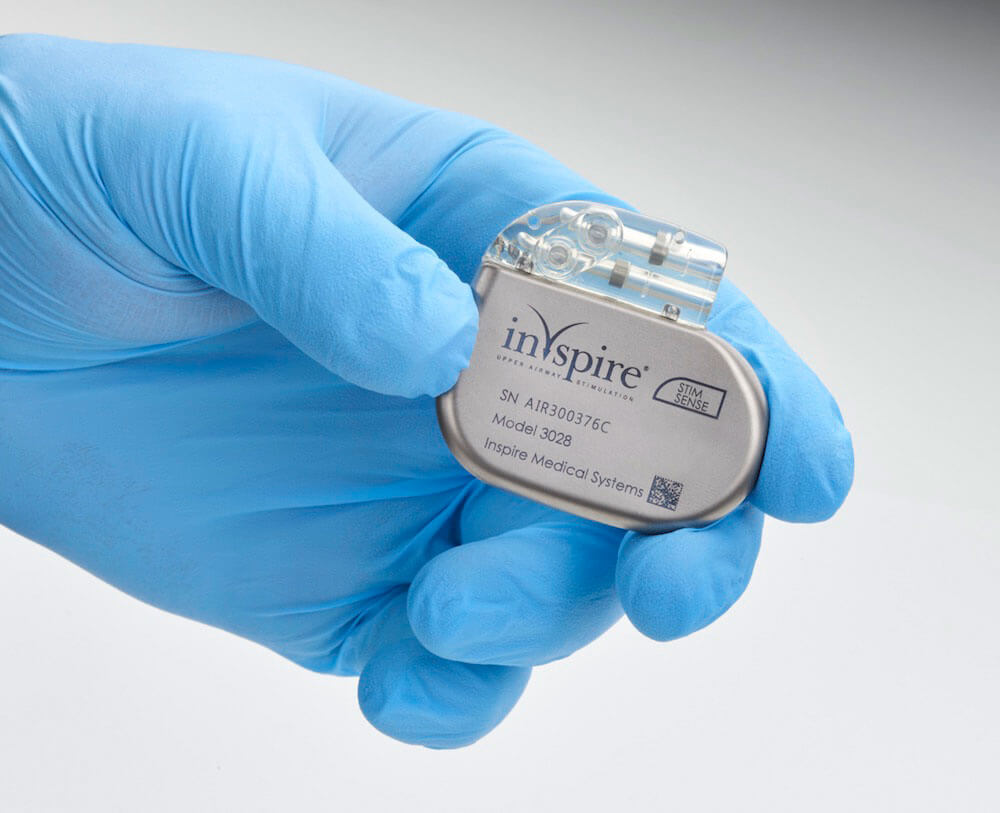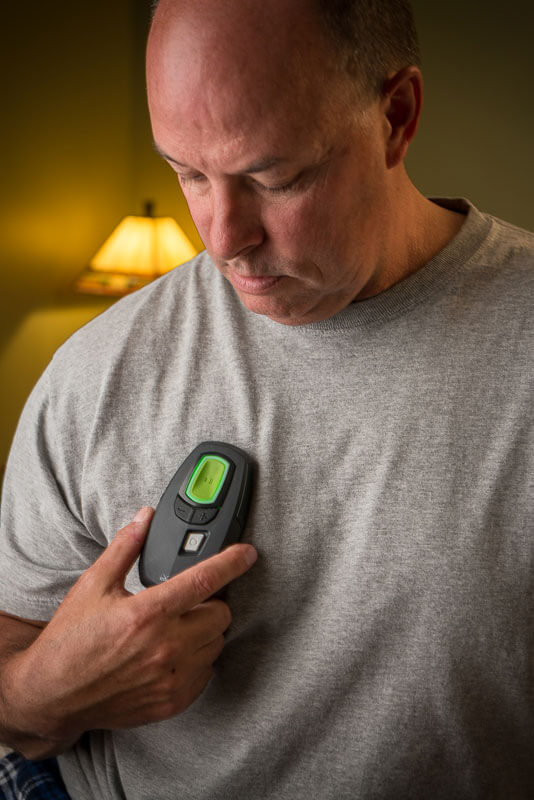UH is Recruiting Patients for Breakthrough Sleep Apnea Treatment
March 02, 2019
An original FDA-approval site, UH continues study of the novel Inspire® Therapy in two international trials
Innovations in Ear, Nose & Throat - Winter 2019
The need for adequate sleep is emerging as a nationally recognized public health issue. In fact, 25 percent of adults report inadequate sleep or rest 15 out of 30 days.1
“We are supposed to spend about a third of our life sleeping. That fact is too often overlooked,” says Amy Schell, MD, Otolaryngology and Sleep Surgery, UH Cleveland Medical Center; and Assistant Professor, Otolaryngology, Case Western Reserve University School of Medicine. “Poor sleep is associated with significant health risks, including hypertension, diabetes, stroke and heart disease.”
 Amy Schell, MD
Amy Schell, MDFor many people, rest is disturbed by obstructive sleep apnea (OSA), caused by airway blockage or collapse. In patients who have untreated OSA, pauses in breathing can last up to 30 seconds, preventing restorative sleep, contributing to daytime fatigue and depriving the body and brain of sufficient oxygen.
In 2010, under the leadership of Kingman P. Strohl, MD, a pulmonologist and Program Director of Sleep Medicine, UH was the only medical center in Northeast Ohio among the sites selected throughout the United States and Europe to participate in the pivotal Stimulation Therapy for Apnea Reduction (STAR) clinical trial of Inspire® Therapy. The fully-implanted neurostimulator senses breathing patterns and delivers mild stimulation to maintain multilevel airway patency during sleep. In 2014, first-year STAR outcome measures were published in the New England Journal of Medicine.
Traditionally, the standard treatment for OSA has been continuous positive airway pressure (CPAP). However, patient tolerance can be a significant stumbling block, with as many as 30 to 40 percent of patients unable to achieve adequate compliance and/or benefit. Inspire® works differently, stimulating the nerve that controls the tongue. Users can activate the pacemaker-sized device, implanted in the right side of the chest, through a handheld remote prior to sleep each night.


“Hypoglossal neurostimulation [upper airway stimulation/UAS] is an innovative alternative to CPAP that doesn’t require surgical manipulation of the airway itself,” Dr. Schell says. “Attached to the implantable device, a sensing lead detects when a patient is trying to breathe and triggers nerve stimulation to the genioglossus (tongue), the primary dilating muscle of the airway.”
Objective data, including the apnea-hypopnea index (AHI), along with subjective indicators such as sleepiness scores and patient satisfaction, demonstrate that people are experiencing significant improvement not only in quality of sleep, but also quality of life.
“Anecdotally, you can see on patients’ faces that this is life-changing,” says Mary Andrews, RRT, CCRP, a respiratory therapist and clinical research coordinator in the Division of Pulmonary, Critical Care & Sleep Medicine at UH. “They actually look more rested.”
Additionally, Andrews notes that improved sleep has helped Inspire® users tackle other health challenges, including losing weight or feeling better prepared to physically recover from procedures such as knee or hip replacement.
Currently, UH is screening patients with OSA to determine if Inspire® is right for them. “The ideal patient has moderate to severe OSA and an appropriate body habitus,” Dr. Schell says. “Additionally, we perform an endoscopy preoperatively to determine if the patient’s airway collapses in a pattern that is amenable to neurostimulation therapy.”
After outpatient surgery to implant the neurostimulator, patients return the following month to have the device activated and titrated during a sleep study.
AN INTERNATIONAL SITE FOR CONTINUED INSPIRE® STUDY
Following are other notable details of the UH Inspire® study:
- The post approval study (PAS) is a 60-month follow-up of patients who were implanted with the Inspire® UAS during the premarket phase to monitor long-term safety and document any serious adverse effects (SAE). Patients are seen in clinic twice a year for five years for physicians to check the device and monitor their progress.
- The ADHERE registry is an ongoing international study with an enrollment goal of 5000 patients. As part of data gathering process, patients are evaluated at four points in time: pre-implant, at time of implant, after settings are titrated and during a final follow-up. Publication of data from the first 508 ADHERE patients, published in late 2018, supports previous clinical evidence that the minimally invasive treatment is a safe and effective alternative for patients not benefitting from CPAP.

“University Hospitals was one of the leading medical centers chosen to spearhead this device coming into FDA approval,” Dr. Schell says.
“Now, with over one thousand patients in the ADHERE database, there is power in numbers. We are able to demonstrate — both objectively and subjectively — that our patients are benefitting from this treatment and achieving better sleep.”
To reach Dr. Amy Schell, email Amy.Schell@UHhospitals.org. To reach Mary Andrews, email Mary.Andrews@UHhospitals.org.
REFERENCES
1. Sleep health. Office of disease prevention and health promotion (ODPHP). www.healthypeople.gov/2020/topics-objectives/topic/sleep-health.
Tags: Clinical Trials, Sleep Medicine


